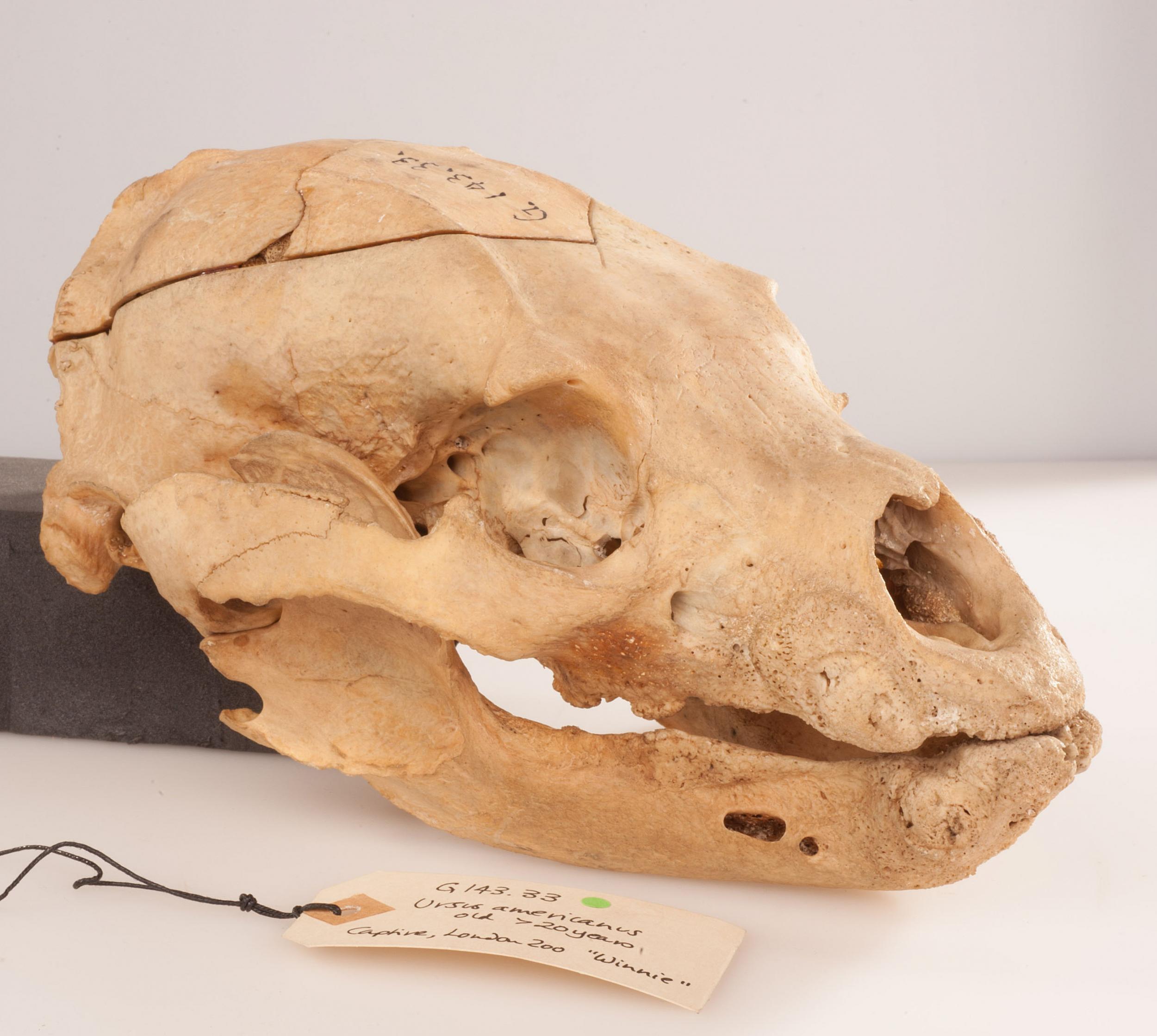Skull of bear that inspired Winnie the Pooh on display for first time in London
The Canadian black bear lost many teeth in old age from years of children feeding her honey

The skull of the bear that inspired AA Milne to write Winnie the Pooh has gone on public display for the first time.
The cuddly fictional bear was named after a Canadian black bear called Winnie that son Christopher Robin enjoyed visiting and feeding honey in London Zoo during the Twenties.
Winnie died in 1934 but her skull was preserved by the Royal College of Surgeons and is now being exhibited in its Hunterian Museum in London. So many children fed her sweet treats that she lost many teeth in old age.
Interest in Winnie has been high for decades, with Winnie the Pooh rated as the favourite children’s book of the past 150 years last year. Christopher Robin’s original stuffed teddy Winnie-the-Pooh is on show in new York along with his other toys.
Dr Sam Alberti, director of museums and archives at the Royal College of Surgeons, said the team carefully considered whether displaying the skull would be a good idea because Winnie is no longer “a cuddly fluffy bear”.
“We thought really hard about bringing her out on display because this isn’t Winnie the Pooh, a cuddly fluffy bear wandering around,” he told the BBC. “This is a skull. But it’s why the skull is here that is the take-home story for us.
“The skull is here alongside the skulls of many other animals. We took a lot of animals who died in London Zoo to understand their anatomy, the science behind these animals.”
He continued: “The story for us is a happy one, we have this research collection to understand how animals behave and the diseases they’re subject to.
“I think Winnie the Pooh would have been very curious to learn that the bear that had inspired him ended up here.”
Subscribe to Independent Premium to bookmark this article
Want to bookmark your favourite articles and stories to read or reference later? Start your Independent Premium subscription today.

Join our commenting forum
Join thought-provoking conversations, follow other Independent readers and see their replies